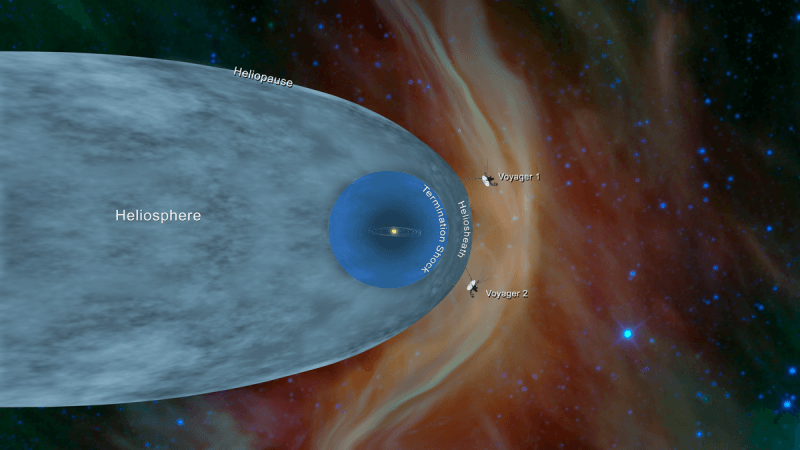For the second time in human history, an object made on Earth by humans has successfully left the Solar System and officially reached the space between stars—interstellar space! NASA's Voyager 2 probe now has left the heliosphere, the protective bubble of magnetic fields originating from the Sun.
The space agency confirmed this news after comparing data from various instruments on board the trailblazing spacecraft. Scientists have determined that the probe finally crossed the outer edge of the heliosphere on November 5.
This boundary, explains NASA is called the heliopause. It is where the hot solar winds meet the cold, dense "interstellar medium". While Voyager 1 achieved this landmark in 2012, Voyager 2 is arguably more interesting as it holds working instruments that will offer a first-time view and observations into interstellar space.

As of now, Voyager 2 now is a little over 18 billion kilometres from Earth. NASA can still communicate with Voyager 2, but information takes roughly 16.5 hours to cover the distance, travelling at the speed of light.
One way that NASA knows for sure that Voyager 2 has left the Solar System is because of something that happened with its onboard Plasma Science Experiment (PLS), says the space agency. PLS uses electrical currents of plasma emitted by the Sun to detect speed, density, temperature, pressure and flux of solar winds inside the Heliosphere. PLS on Voyager 2 recorded a sharp fall in the speed of solar winds on November 5, explains NASA. Since then, PLS has observed no solar winds flowing around Voyager 2. This led scientists to conclude that the probe has left the Solar System.

"Working on Voyager makes me feel like an explorer because everything we're seeing is new," said John Richardson, principal investigator for the PLS instrument and a principal research scientist at the Massachusetts Institute of Technology.
"Even though Voyager 1 crossed the heliopause in 2012, it did so at a different place and a different time, and without the PLS data. So we're still seeing things that no one has seen before."
"There is still a lot to learn about the region of interstellar space immediately beyond the heliopause," said Ed Stone, Voyager project scientist based at Caltech in Pasadena, California.
"Voyager has a very special place for us in our heliophysics fleet," said Nicola Fox, director of the Heliophysics Division at NASA Headquarters. "Our studies start at the Sun and extend out to everything the solar wind touches. To have the Voyagers sending back information about the edge of the Sun's influence gives us an unprecedented glimpse of truly uncharted territory."









